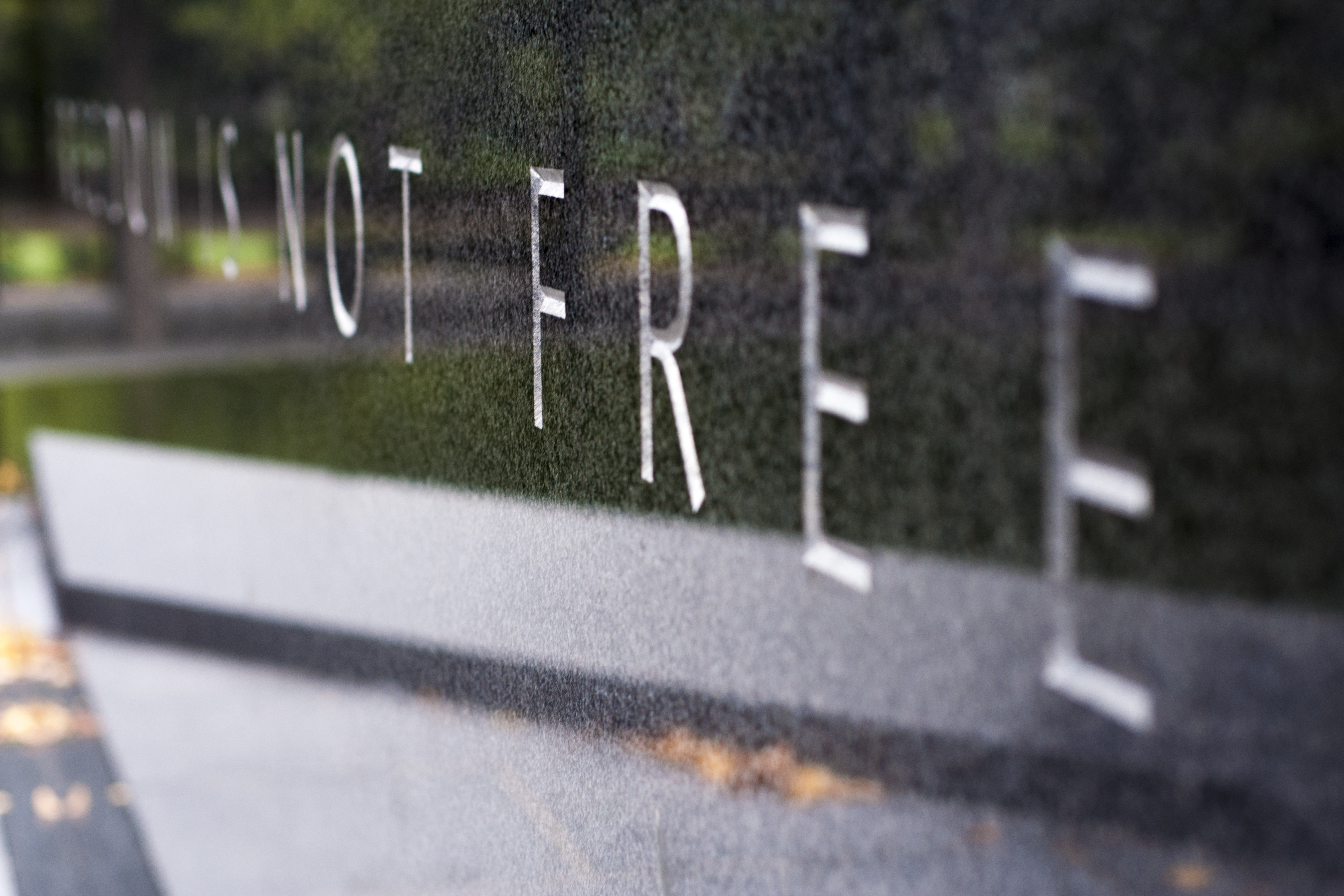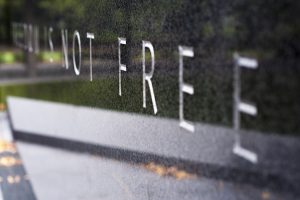Looking for a depression in the ground, an elongated patch of grass that grew taller and greener than the rest, old military equipment, or defense fortifications. Fory and the others continued their search. From after-battle reports they knew that the remains of a soldier were somewhere in the 1,000 meter square grid marked on their map.
Eventually, their search line moved over and down three small knolls and, some hundred or so yards farther, came to the base of a cliff. There, against the cliff face, they saw that someone had built a semi circular rock wall that offered a small area of protection.
They carefully climbed over the makeshift fort wall and found hundreds of machine gun and M1 Garand shell casings, and a score or more of grenade pins and handles scattered about. In the middle of this detritus of war, they also found the bones and gear webbing of a solitary US soldier.
Fory and his men knew that a furious battle had taken place at the rock fortification. In front of the rough-hewn fort and on the facing ground of the knolls lay the remains of more than 300 Chinese soldiers.
What they couldn’t comprehend, at first, was the large number of spent rounds behind the fort wall; one man didn’t carry that much ammunition; and certainly not both a machine gun and a rifle. Adding to the mystery was a weather-beaten rope that hung down from the cliff above and behind the remains.
As they continued to canvass the site, clearing away debris from the American’s remains, carefully checking for live grenades or other explosives, the searchers concluded that there had to have been several men fighting from behind the rock wall. But what had prevented the recovery of the sole US serviceman? Were there possibly other remains?
They continued their investigation and finally were left with a single, inescapable conclusion: one soldier had stayed behind so the rest could scale to safety up the cliff.
“There wasn’t a dry eye in the squad by the time we finished recovering his remains, ” Fory told me one night in Louisiana, the story still fresh in his mind and his emotions resonating in his words forty years later.
– Michael Sledge, “Soldier Dead: How We Recover, Identify, Bury, and Honor Our Military Fallen”

